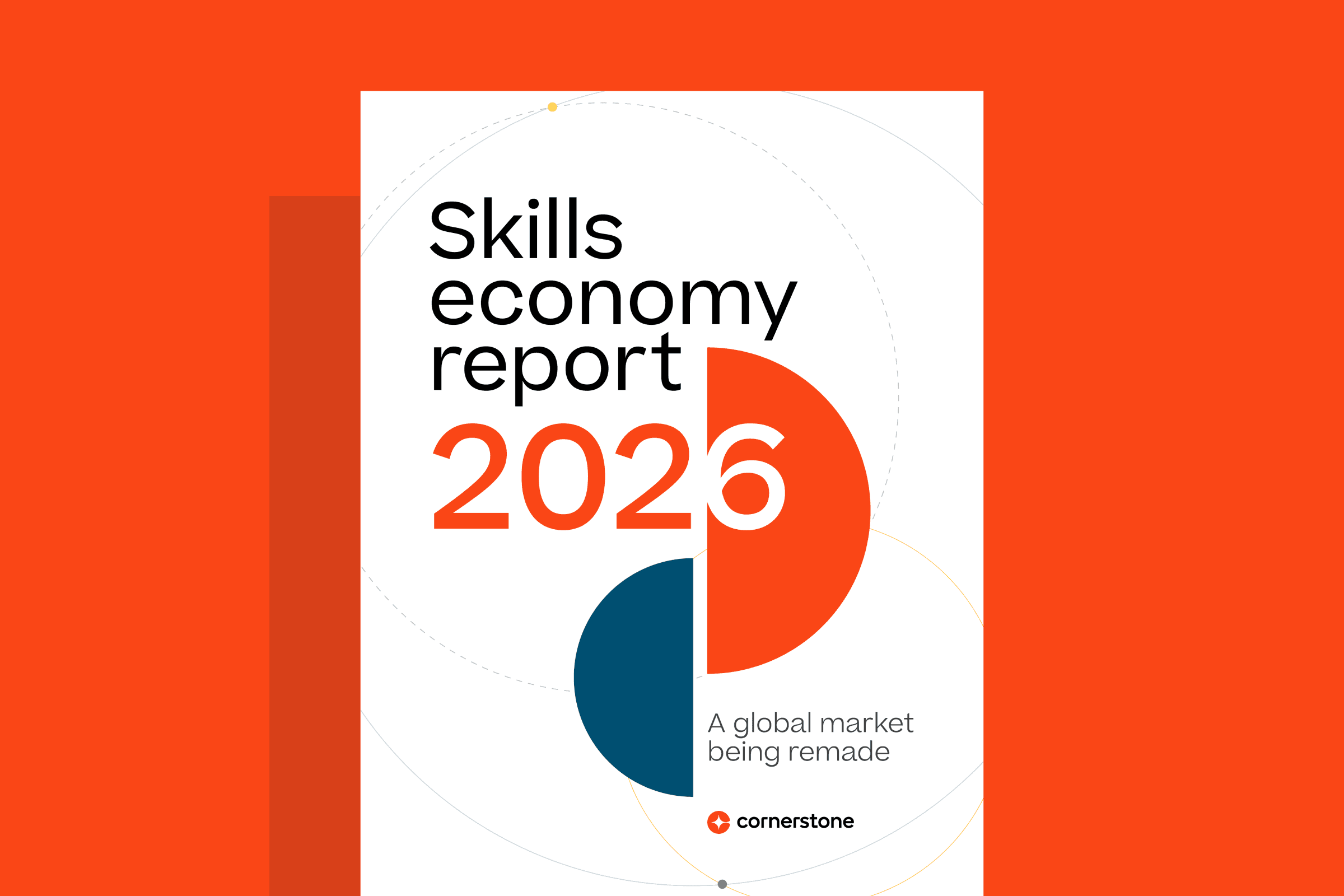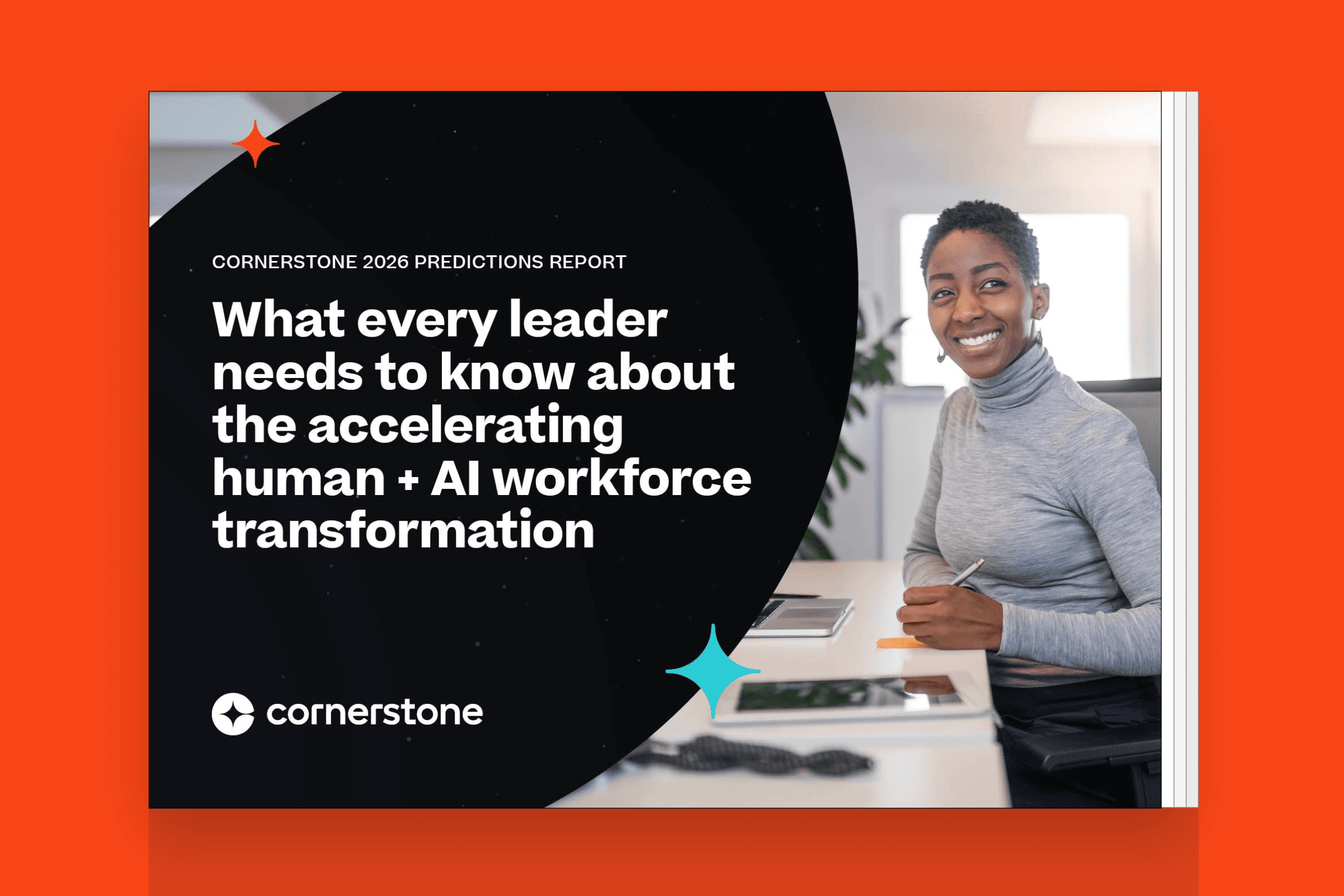Since 2020 got started, so much has changed, yet so much hasn't.
When we conducted the 2020 Cornerstone Global Skills Report survey a few weeks after the World Health Organization (WHO) declared COVID-19 a global pandemic, we were pretty sure it'd uncover some interesting insights. And it did not disappoint.
A key finding led to what we dubbed the "Skills Confidence Gap." This statistically significant gap revealed the surprising difference between employers' and employees' levels of confidence in their organizations' skill development support.
About 18 months later, we were curious to learn if the Skills Confidence Gap shrank or widened. So in the fall of 2021, we partnered with Starr Conspiracy again to conduct a new global research study and examine how effectively organizations are evolving their people development practices to meet the changing nature of work in a post-2020 world.
And it's not like we'd write this entire blog if the report weren't full of interesting statistics and revelations. So here's a rundown of what we found, how it affects work and why it matters for your organization.
The Skills Confidence Gap and you
At the start of the pandemic, we were already in the middle of a global skills shortage. Employers said they couldn't find people who had the skills they needed to fill roles. But in the minds of their employees, the organizations already had found the people; it was them. The holdup was that the employers weren't doing enough to support their skill growth into those open roles.
Our study found a 30% gap between employer and employee perception of the organization's commitment to effective skill development. Only 60% of employees reported they were confident in their organization's prioritization of skill development opportunities compared to 90% of employers.
Unfortunately, that gap hasn't closed. And now, employee confidence has dropped even more. Only 55% of employees in 2022 say they have confidence in their organization's skill development opportunities.
This year, we expanded the scope of our research to include three major points of how employers and employees view their organizations':
- Continued investment in skills
- Ability to influence talent and business outcomes
- Response to the pandemic
We also examined how organizational performance factored into those investments, which may be the most exciting result in this year's research. More on that later.
What makes high-performing organizations so high performing
First and foremost, it's important to note our recent research revealed that both organizations and their people see skills development as an increasingly important part of navigating their shared future. What separates high-performing organizations from the rest is how they're investing.
Our research looked at high-, average- and laggard-performing organizations. How we determined an organization's performance level based on mainly three measurements:
- Profitability
- Turnover
- Net Promoter Score® (NPS®)
High-performing organizations have industry-leading profitability, low turnover and high employee NPS scores.
We compared high-, average- and laggard-performing organizations' approaches to skills development, talent strategy and how they reacted to the pandemic.
High-performing organizations reported a much smaller Skills Confidence Gap than average or laggard organizations. There was only an 11% gap between how employers and employees perceived the effectiveness of their organization's skill development programs in high-performing organizations. Average-performing organizations had a 35% gap, and there was a record 42% gap for laggards.
There were also gaps between laggard- and high-performing organizations when it came to:
- Leadership development
- Internal mobility
- Employee engagement
- Retention
- Quality of hire
- Diversity and inclusion
It's clear that during an era of uncertainty, high-performing organizations believe in investing heavily in their people and their skills as a strategy to grow, innovate and perform. High-performing organizations are successful when they develop the skills of their workforce and align to the perceptions, needs and desires of their workforce.
Closing the gap
It's no surprise that employers' most urgent concern in the next three years is skills and talent shortages, with 48% citing this as one of their top three concerns.
And organizations are taking it seriously by reporting they've either already begun prioritizing skills development or plan to in the next year to help mitigate that concern. The results were varied:
- High-performing organizations – 72% will prioritize in the next year, and 47% have already begun
- Average-performing organizations – 34% said they planned to make changes in the next year, and 33% said within the next three years
- Laggard-performing organizations – Nearly 3x more likely to have stalled skills development investments than high-performing organizations.
Where employees want to learn
Aside from "independent internet research," employees reported that the most likely place they go for career development information is their "organization's skills and development platform." And successful learning platforms increase employees' desire for more learning, which feeds into creating a culture of learning in your organization.
High-performing organizations have also found that investing in various learning and skills development is vital. They're investing in a multitude of opportunities and winning out in on-the-job skills training, mentoring and coaching programs, formal education and university learning, learning content and learning and development technology.
There's no one right way to create a skills development program for your organization. What can make you a high-performing organization is to listen to your people and give them all the skill development opportunities they crave. It's an investment that pays off for employees and employers. How many other things genuinely do that? Download the report today.


